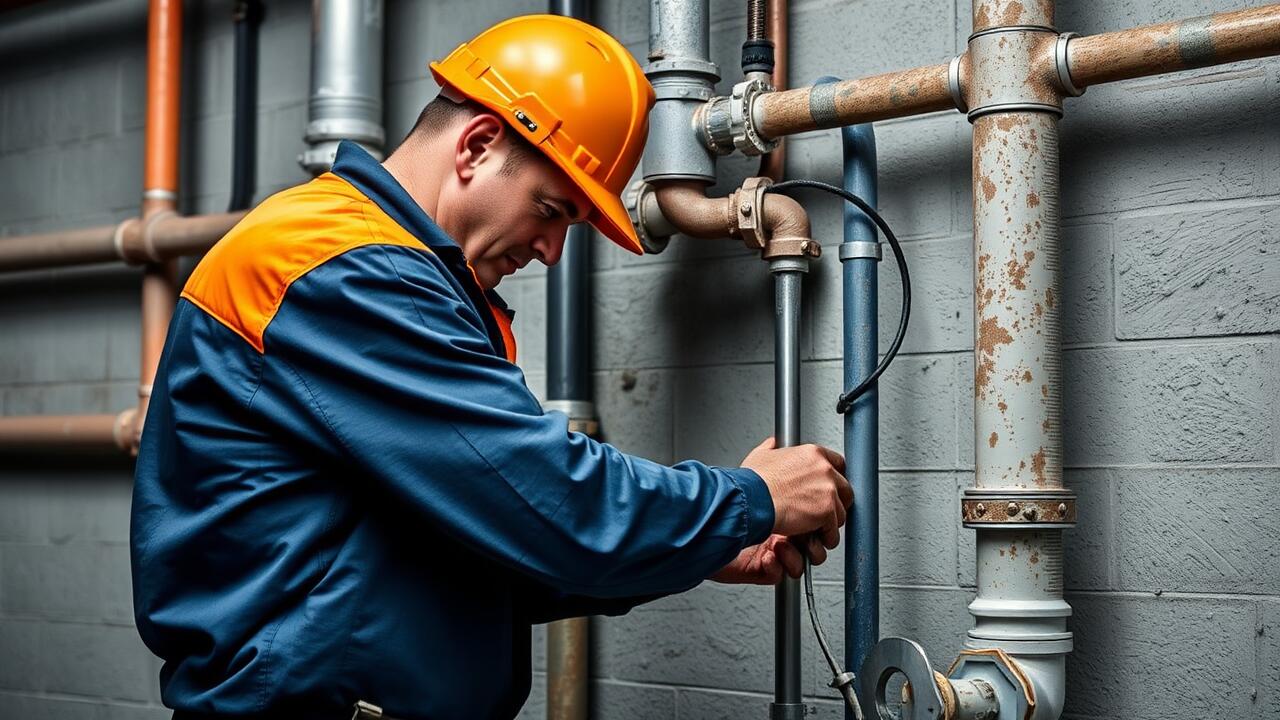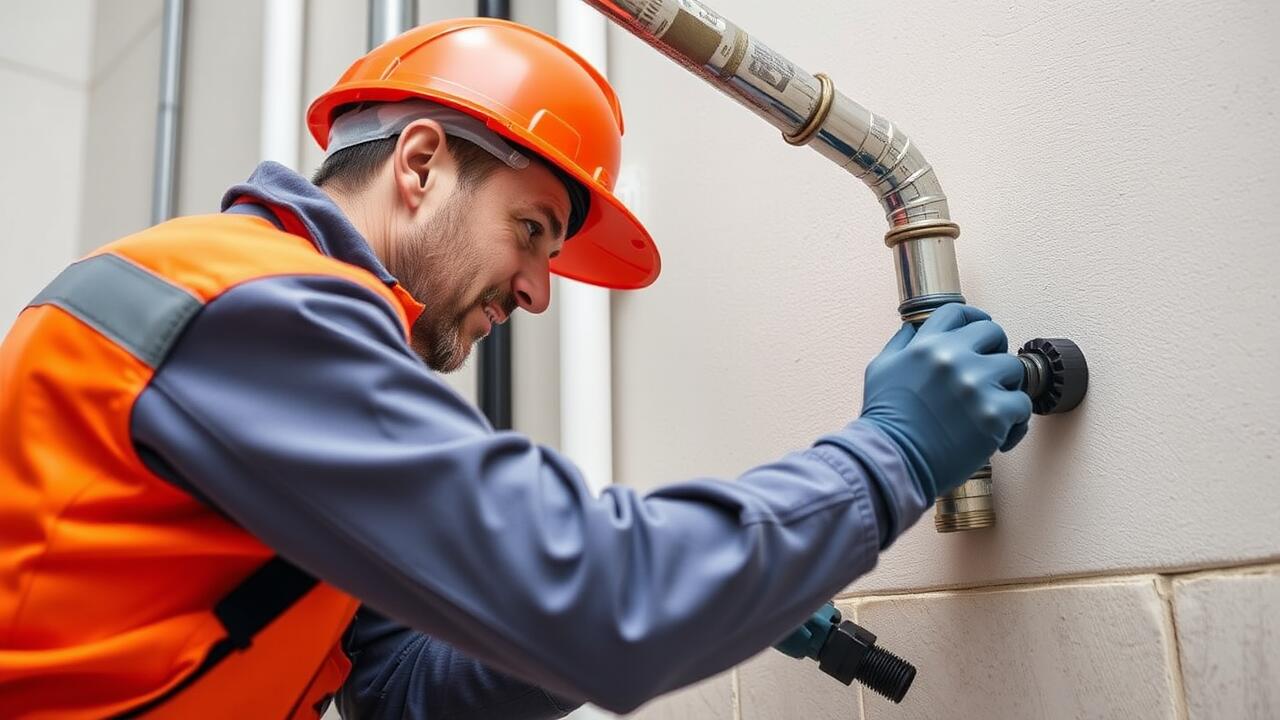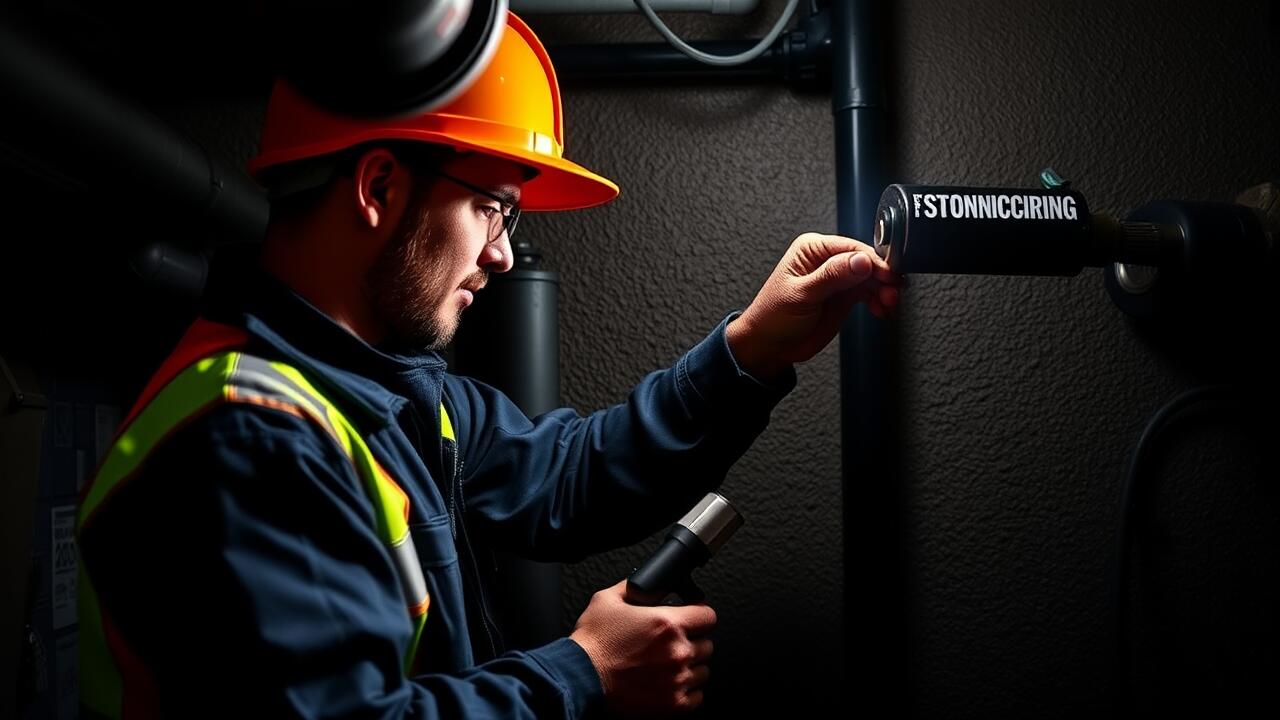
Maintenance Tips for Galvanized Steel Pipes
Regular inspection is essential for maintaining galvanized steel pipes. Checking for any signs of corrosion or rust can help identify potential problems early. In addition, keeping the joints and fittings free from debris ensures proper water flow and prevents blockages. If you're located in North Hollywood, Los Angeles, pipe installation becomes crucial. Ensuring that the installation is done correctly can significantly extend the lifespan of galvanized pipes.
Cleaning is another important aspect of maintenance. Use a mild detergent and water solution to remove any surface grime or contaminants that could lead to corrosion. Avoid abrasive cleaners that might scratch the surface. It can be beneficial to install protective covers or coatings if pipes are exposed to harsh environmental conditions. Addressing these maintenance needs promptly can save time and money in the long run.
Best Practices for Longevity
To ensure the longevity of galvanized steel pipes, performing regular inspections is vital. Checking for signs of corrosion or wear can help address potential issues before they escalate. Maintaining proper water flow and pressure also mitigates stress on the pipes, prolonging their lifespan. In areas like North Hollywood, Los Angeles, pipe installation must adhere to local standards to enhance durability and performance.
Properly insulating galvanized steel pipes can reduce the risk of condensation and frost damage. In colder climates, insulation helps maintain temperature, reducing stress caused by freezing and thawing. Additionally, selecting the right fittings and connections during installation prevents leaks that may compromise the integrity of the system. By following these best practices, property owners can maximize the performance and lifespan of their galvanized steel plumbing systems.
Environmental Impact of Galvanized Steel
Galvanized steel pipes offer several advantages in construction and plumbing, but their environmental impact deserves careful consideration. The production of these pipes requires significant energy, contributing to carbon emissions. Additionally, the process involves the use of zinc, which, while essential for preventing corrosion, can create pollution if not managed properly. The environmental toll extends beyond just production; the longevity of galvanized steel pipes can lead to reduced waste since they tend to last longer than alternatives, potentially benefiting the ecosystem by minimizing disposal issues.
In urban areas like North Hollywood, Los Angeles, pipe installation often incorporates galvanized steel due to its durability and resistance to rust. However, the impact of this material on local environments must be evaluated. Over time, leaching of zinc into waterways can occur, potentially affecting aquatic life. Community awareness and regulatory measures are vital to ensuring that any adverse effects are monitored and mitigated, balancing the need for reliable infrastructure with the preservation of the local ecosystem.
Sustainability Aspects in Manufacturing
The manufacturing of galvanized steel pipes involves several sustainable practices aimed at minimizing environmental impact. At the onset, the production process often incorporates recycled materials, which significantly reduces the need for virgin resources. By using steel scrap, manufacturers not only conserve energy but also lower greenhouse gas emissions typically associated with mining and processing new steel. This approach aligns with a growing trend in the industry towards more eco-friendly practices and reduces the overall carbon footprint of products such as galvanized steel pipes.
In addition to using recycled materials, manufacturers are increasingly focused on improving energy efficiency during production. Advanced technologies and processes, such as electric arc furnaces, allow for a more sustainable approach to steelmaking. It also lowers the emissions of harmful substances. Companies engage in practices that ensure proper waste management and water conservation, which further enhance their sustainability. For services such as North Hollywood, Los Angeles Pipe installation, selecting products from manufacturers that prioritize sustainability helps support environmentally responsible construction projects.
Choosing the Right Size and Specification
Selecting the correct size and specification of galvanized steel pipes is vital for ensuring proper functionality in any project. Various factors must be considered, including the intended use, flow rates, and pressure requirements. For instance, a plumbing system in a residential setting will have different specifications compared to an industrial application. Project planners and contractors must assess these criteria closely.
In areas like North Hollywood, Los Angeles, pipe installation needs to meet both regulatory standards and practical requirements. Engaging with local suppliers and professionals can provide valuable insight into size choices and compatibility with existing infrastructure. Proper sizing helps prevent issues such as leakage or inefficient water flow, ensuring the long-term success of the installation.
Factors to Consider When Selecting Pipes
Selecting the right size and specification of pipes is crucial for ensuring the efficiency and durability of any plumbing system. Consider the intended application when choosing pipes, as different projects may have varying requirements regarding flow rate and pressure. Additionally, account for the environment where the pipes will be installed. Changes in temperature or exposure to corrosive elements can significantly affect the choice of materials.
In North Hollywood, Los Angeles, pipe installation often demands attention to local regulations and conditions. Your selection should align with these standards to mitigate potential issues down the line. Look for pipes that not only meet these specifications but also offer longevity and ease of maintenance. Consulting with a professional can provide insights into the optimal size and material for your specific needs, ensuring a successful installation.
FAQS
What are galvanized steel pipes used for?
Galvanized steel pipes are commonly used for plumbing, water supply lines, and certain structural applications due to their corrosion resistance and durability.
How can I maintain galvanized steel pipes?
Regular inspections for signs of rust or corrosion, cleaning the surface, and addressing leaks promptly can help maintain galvanized steel pipes effectively.
Are galvanized steel pipes environmentally friendly?
While galvanized steel pipes have a longer lifespan which can reduce waste, the environmental impact largely depends on the manufacturing process and the recycling practices in place.
What should I consider when choosing the size of galvanized steel pipes?
Factors such as the intended use, water pressure, flow rate, and local plumbing codes should be considered when selecting the appropriate size for galvanized steel pipes.
Do galvanized steel pipes require special installation techniques?
Yes, proper installation techniques, including ensuring secure joints and considering thermal expansion, are important to prevent leaks and ensure the longevity of galvanized steel pipes.



